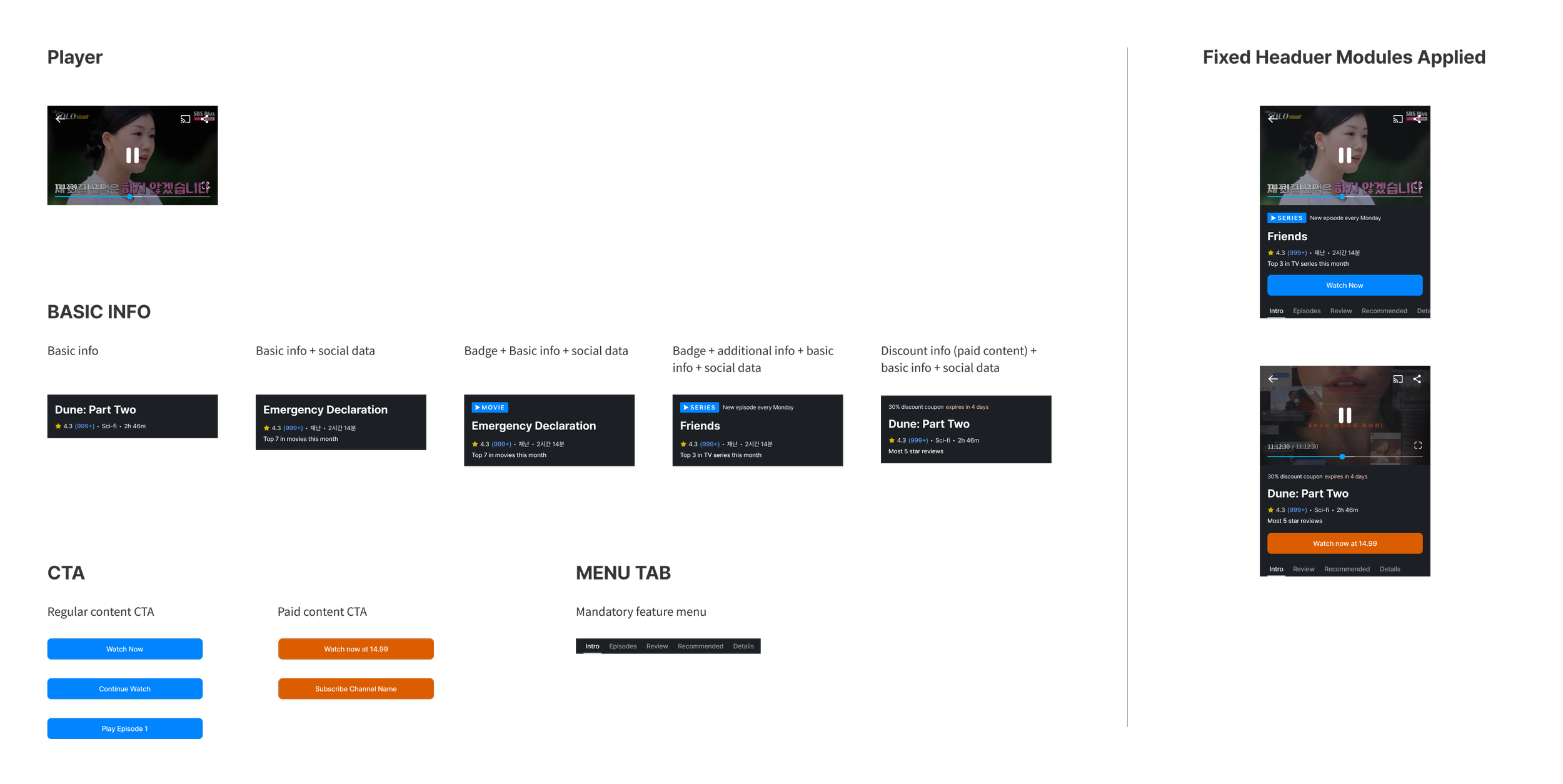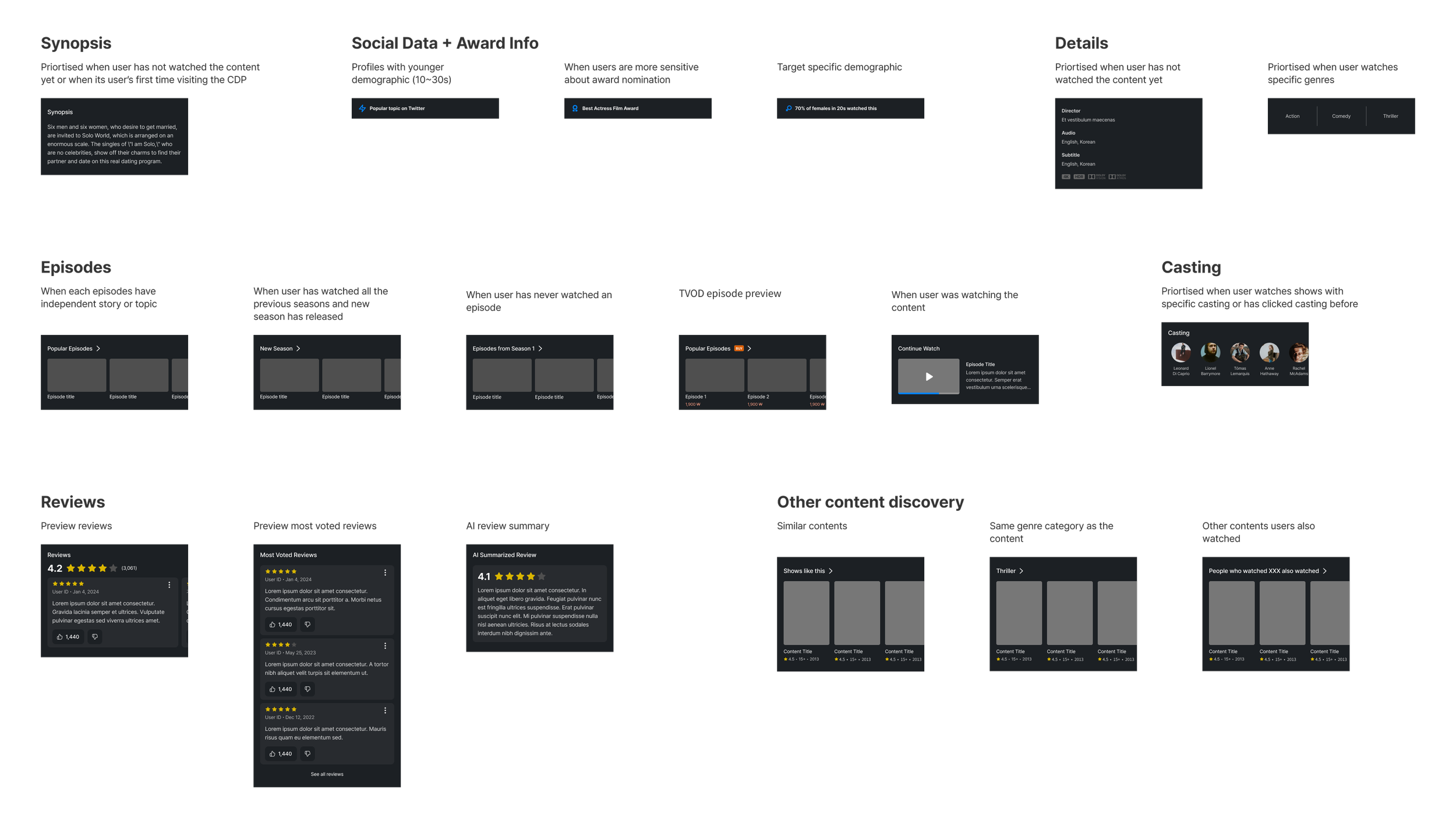Patent submitted
Dynamic content detail page with personalization ML
Problem
There are numerous user journeys and types of users, making it challenging to satisfy all user jobs with a uniform content detail page. To effectively engage users, the Content Detail Page (CDP) should showcase the most appealing components in the most effective order to address diverse needs.
Information that is considered important is different for each users
Some users may consider review and rating the most important
Some users may consider synopsis or genres more important
The user journey prior to entering the content detail page can vary, and depending on the journey, what users are looking for on the CDP differs.
If the user is coming from search, it is most likely the user already has some context of the content
If the user is coming from continue watch, the user might not need any information instead immediate access to episodes
Information that is considered important is different by each stage of watching experience (before, during, after)
If the user has never accessed the specific content’s CDP, the page should try to show most attractive information for the user
If the user has finished watching the content, the CDP should recommend what to watch next or engage users to watch again next time
Design
We have proposed a modular system that curates various types of components in differing sequences. The design created multiple components from the same features to suit specific scenarios, while machine learning can determine the optimal order in which to display these components based on varying conditions.
Fixed components
Non-fixed components
We created fixed components that should unconditionally stay at top and also created set of dynamic components that could be displayed different combinations and orders.
Machine Learning
It is inevitable to experience a certain level of cold start, but in order to reduce the learning curve, we could begin by manually curating for specific cases based on our hypotheses.
Example case 1
Before user has watched any content,
priortize more general information such as
synopsis, casting, review, social data.
Example case 2
Users who are continue watching the content, priortize components that help continue watch like episode list component.
If the user does not want to continue watch,
recommend similar contents to watch next like similar content component.
Example case 3
When user has finished watching the content, priortize components that suggest what to watch next such as similar content component or people also have watched… component
As we collect data on conversion rates and analyze which components convert the highest number of playbacks, the ML engine can continuously generate various combinations of components in different sequences to target specific demographics, user statuses, genres, etc.
Conclusion
Eventually, the ML engine will produce sufficient combinations to target users at the profile level, ensuring that upon landing on the content detail page, users encounter the components most relevant to them.
The design team can continuously develop new components to test, aiming to further enhance these metrics. We will be able to create the most effective content detail pages that achieve the highest possible conversion rates. Meanwhile, ensuring that users receive the most relevant information to them, creating a win-win situation for both users and the business.
Related Project






